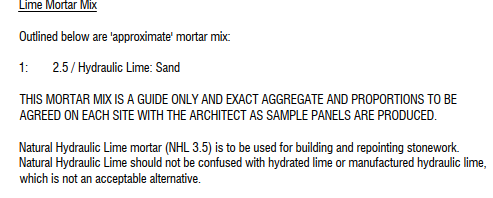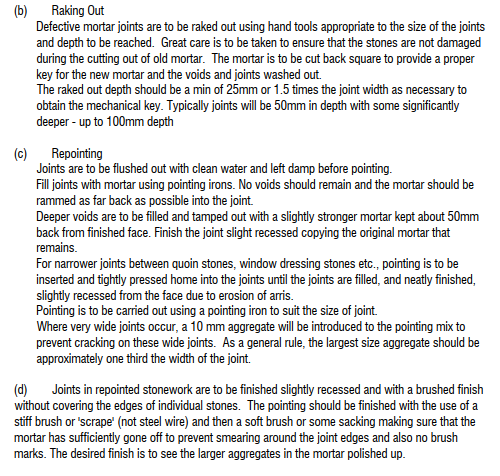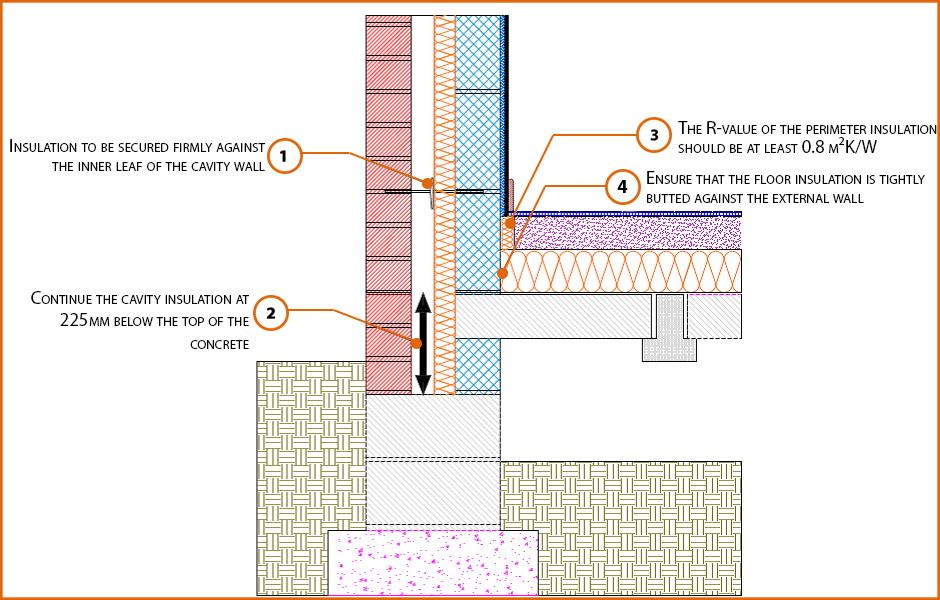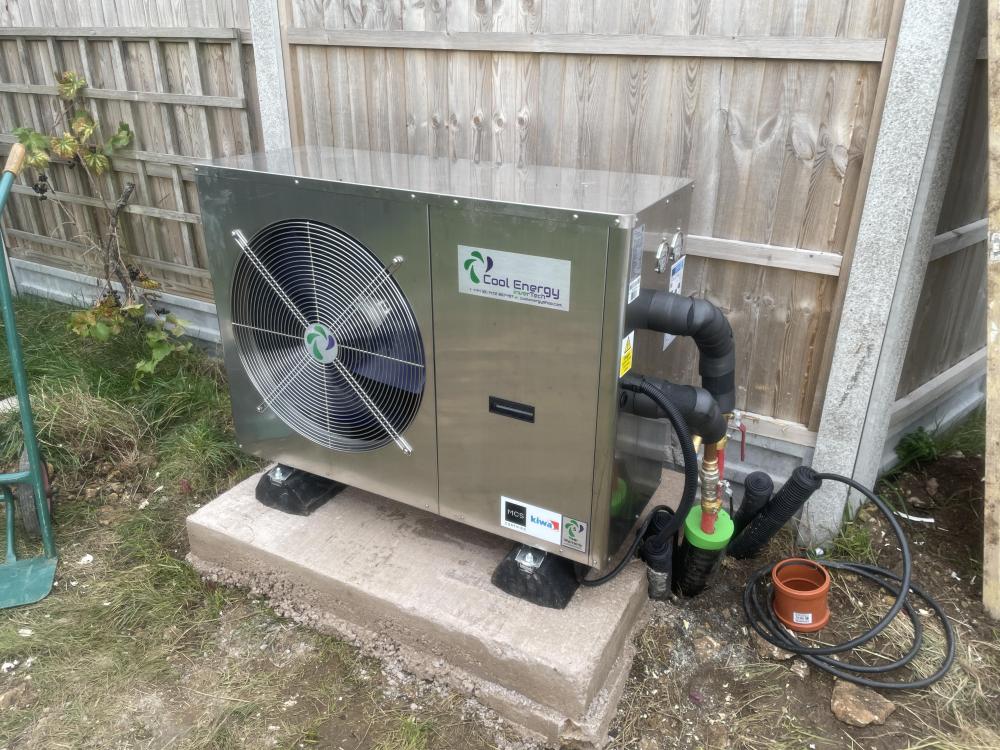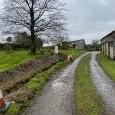Leaderboard
Popular Content
Showing content with the highest reputation on 03/07/24 in all areas
-
@phykell thanks for recommending my Permitted Development videos. In a previous life I did some planning consultancy, submitting appeals on dubious planning decisions. Nowadays I lurk on BuildHub when not progressing my own selfbuild3 points
-
Works no problem, I even have 300mm pipe spacing, 100mm concrete and again no issue. But they are a bit of a learning curve. Few things I found through experimenting, you need to be aware of. Changing floor temperature and house is quite a long process (many hours), so a normal thermostat is just rubbish and you get big under and over swings. You really need to use a 0.1 Deg hysterisis thermostat. You cannot use room compensation as the algorithms cannot cope with the long reaction times. Don't bother trying to do temperature setbacks, they generally don't work the way you expect. You cannot switch the heating on at work and hope to have a warm house when you get home (unless you do when you arrive at work). There is zero point zoning, run as a single zone. Two options of how to operate, charge the floor and use like a storage heater, or continuously feed the floor at a low temperature. I have done both and they work equally well. 5 degs difference in flow temp is the difference in the two methods. I am on E7 with ASHP, battery and charge the floor at 33 degs (overnight), for between 7 and 12 hrs depending on outside temp, automated with a timer thermostat. Generally it takes another 12 to 18 hrs to cool enough for the heating to come back on again. The wife was quite shocked the other week when it was near freezing outside (6pm) and I told the heating actually went off at about 10am and was not coming back on until after midnight. You can't do that with 50mm screed.2 points
-
Maybe I'm missing something but there seems no point in battery storage if youve got a disc meter?? If you've got 10kwh spare PV and it runs to grid then there's 10 units "credit" on the meter for later use when you draw from the grid. Put the same 10 units into your own batteries and youve got to spend £1000's and suffer the charging/inversion losses when you want to use your PV later. Just make sure your usage is more than generation in the summer so the meter has a small net increase in the reading. Not sure how legit your set up is but net metering seems a reasonable thing to me2 points
-
I think the extension walls are restraining the outer leaf, with thermal expansion and contraction in the original adjacent length causing a moment couple at the corner. This has cracked the brick vertically. This is a bit like in diagram 4 https://www.nhbc.co.uk/binaries/content/assets/nhbc/tech-zone/nhbc-standards/tech-guidance/6.1/movement-joints-in-masonry-walls-.pdf Wall tie corrosion tends to exhibit horizontal cracking, as the corrosion products jack the bed joints apart.2 points
-
Me. Please don't do that. Erector. If I was going to fall off, I would have died years ago. Me to HSE: I want to use fall nets. HSE: They are a continental idea and we don't allow them. The erectors must shuffle along and hook themselves* to the structure. Now? At least the rules are clear, albeit costly. * that's a slow (15 mins?) way to die of blood blockage, hanging in a harness, unless there is a mewp to get you down.2 points
-
+1 on the above. done far too many small portals as fill in jobs and lost money on every one …. And that was during 90’s when steel erectors walked over portals, climbed columns and monkeyed across purlins.2 points
-
Erection only? I'd say that will take 4 skilled men : day 1. Offload and prep. 2 erect primary steel and a few rails 3 to 5 remaining rails. 6 sundries and clear up. 7 contingency so 7 x 4 x £250 average? crane or FL 2 days mewp 7 days 10% sundries 30% markup if a working owner. Otherwise 50% £13k. To £15k assumes ready availability of the skills, if not, add accordingly. and a hard running surface. Inside and perimeter. If not, forget the above. assumes all parts correct, foundation bolts correct, and no drillling. would i do it for that? No. Too many things go wrong with other peoples frames on other peoples sites.2 points
-
2 points
-
https://www.screwfix.com/p/flomasta-compression-adapting-female-coupler-28mm-x-1-/961332 points
-
1 point
-
Yeah as Mike said it will work fine, probably better than in a 50mm screed. The house I currently live in has UFH pipes in at least 100mm concrete and is fine, the whole estate of approx 500 houses is the same. Norfolk Homes have been doing it this way for years. Ive done my new build the same. Anyone who tells you it won’t work doesn’t know what they are talking about.1 point
-
1 point
-
Yes, 100mm depth works fine. It just takes the floor longer to respond to any changes in settings (compared to thinner screeds) as you have a larger mass to heat up / cool down.1 point
-
I don’t think so if the joists are not joined above the wall and the same dimentions as the others. I still think it’s a small lobby for that outside door.1 point
-
1 point
-
Yes, he should be using concrete slips which are 40mm deep when used with a mortar bed is 50mm to fill the gap between the low part of the beams https://www.bradfords.co.uk/details-blc0561 point
-
1 point
-
1 point
-
Interesting, "ground area" is not defined in the order. So, it could be argued that the overhang has no ground area since it does not sit on the ground. However, it could also be argued that the overhang projects over a ground area so should be included. You can see why so much planning ends up in the courts!1 point
-
Fundamentally a heat pump runs as detailed below 1. you or it sets a target flow temp, depending on fixed flow or a compensated flow temp. 2. Heat pump starts and monitors return temp and delta T 3. First it maintains delta T, so if you have a target flow temp of 40 and delta T of 5, but the return temp is 25, it will flow 30 degs until the delta T reduces below 5. As the delta T reduces the heat pump add more flow temp until it gets to 40 degs, while maintaining the delta T. 4. Once at 40 degs the ASHP will modulate down from full power to a lower setting to maintain, 40 deg and the delta T. Two things cause a slow ramp up, the heating system has been off for too long, or you are trying to bring temp up too quick. How exactly do you operate the heating? Do you have a buffer, if so how big? How long does the DHW heating cycle take? How many loops of UFH do you have?1 point
-
Going through this very saga at the moment with East Herts. We have satisfied a couple of conditions already. 'Materials of construction' was easy. We sent photo's of the brick slip samples, roof tiles and Cedral cladding. For the windows we just told them they would be colour x, from supplier Y, in Alu clad timber. Actually in all cases we stated, 'or similar' which gives us a degree of wriggle room should we need/want it. Planning were good as gold over this condition. Still waiting for a response to the hard & soft landscaping condition, ( 3 weeks and counting). What we did was look at a successful submission from a house 100 metres away that was built in 2018. We took notice of the style and level of detail and figured that was clearly good enough. Our block plan submission for the full planning application contained most of what we decided to show so we basically re submitted that with a new name & date and added a wider driveway and low hedge. I added a note into the key that the driveway and patio would be SUDS compliant without specifying what exactly it would be. This top down view showed the house. drive, patio and a hedge at the front boundary. Rest is grass. Very light on detail to be honest but as i said the neighbours similar version got through. If you dont give much species detail then you dont have to provide specifics or maintenance plans. Grass everywhere mate! The biggest issue i have had with this so far has been getting the drawing submissions into the format and scale that they wanted. See a thread on here about this nonsense. .PDF and at 1:200 @ A1 in our case.1 point
-
1 point
-
That's not a bad idea, although then I'd need to find a way to secure the pole, given wind etc. I was thinking of mounting it on a concrete fence post that is quite close to the tree. The pigeons often sit on the fence (literally, not figuratively) before attacking the tree.1 point
-
Materials... For the first one you just send elevation drawings marked up with the materials. Attach a list with pictures and or samples. Mention if they are already used locally. Eg.. "External walls where shown on the elevation drawings to be ABC bricks made by DEF. These have already been used on other properties in the area." "Windows are to be hardwood/uPVC made by GHI model JKL. See brochure/photo of example." "Roof to be tiled with plain clay tiles by MNO." If the bricks aren't already used locally you may need to provide samples. Brick suppliers will sometimes let you have 3 bricks free for this. Landscape... This is usually a site plan marked up showing trees to be retained, trees to be removed (dotted), fences, hedges, driveway finish and any hard surfaces. On ours the main trees were numbered on the plan and a document provided detailing their species and approx size and their intended fate. "New planting to be watered and maintained according to the suppliers recommendations. Any trees that die in the first 3 years to be replaced." We were told we had to plant a hedge and you can find planting specs on the web for that.Eg "Native Hedge whips planted in two staggered rows 50cm spart. Species to include mix of ???. Plastic spirals to provide rabbit protection." Any trees (and plants?) you show on the landscaping plan you can reclaim the VAT for. Otherwise not. Noise/Screening.. Not sure about the noise condition. You will have to read the document they refer to and see what figures and mitigation measures it contains. You might be able to cite sections of their own document back to them. Ideally you should propose what you want to do. If you get stuck you could ask the councils landscape officer for advice but he might suggest a lot of expensive things.1 point
-
They probably do, but why do you say this with 100% certainty? It is the LPA that decides. An expert such as a planning consultant who is familiar with the LPA's process and practice might have a relevant informed view. It is dangerous putting in a PA "blind" because rejection kicks off what might be an extremely long process - a year+ delay, if not indefinite. IMO, far better to have a dialogue with the Planning Department, and then submit an application that has a local officer's support. And the officer might just say "this doesn't need an application", in which case a CoLD is essential to protect the owner.1 point
-
Yes absolutely fine, my unit came with 20mm flexible pipe like you get on a dishwasher/washing machine, just drips out1 point
-
1 point
-
This may (or may not) be of some help of seeing the "total" picture, I configured this when my daughter was installing UFH and just tailored it to your UFH + rad heating demands, I'm not sure when you say spec'd for DT25 if you mean rads designed as "T25" rads?, if so they will give a rad output of 40.6% of T50 sized rads and would require a oversizing factor of X2.46. say 2.5. I'm also assuming that the required boiler flow temperature required is 48C and the UFH required manifold temp is 40C. I didn't include cylinder heating.1 point
-
Updates: 1. Got the 500W heater (13eur+3 eur for 12-hour shipping) from Amazon. Yes, it works very nicely in this space: from 17.5C to 20C in an hour - I doubt anybody would be unsatisfied. Bit noisy, since it has a fan. 2. An impolite electrician came (I was computing 750W/220V = about 3.5 amperes (OK, 3.4 amperes), thinking aloud, and he said "sir, I do not know who has told you that, the power in electrical lines is 16 amperes" and I had to tell him in the most polite of ways that, since 3.5<16, that confirmed what he said: the radiator would be fine - one can plug it into a socket; I did not even venture the idea of converting the lighting socket that has been given here) and gave me a quote of 300eur for a radiateur rayonnant. He was extremely irritated by the suggestion that the difference in efficiency between that and a more expensive radiateur à inertie would be minor (indeed non-existent, if we are pedantic about what mean by "efficiency": it's always 0%, in that what we are doing is precisely converting energy into heat and nothing else - of course I didn't say that). A hopefully more polite and less stuck-up electrician should visit later today. I'm frankly tempted to keep the 500W heater. I'm just a little bit concerned that some problematic guest might fall asleep over it while exhaling alcoholic fumes, all while wearing a paper hat made out of Kleenex or something.1 point
-
Hi, yeah not great. I refer you to... Sounds like we are doing much the same thing (for a similar time, we're on 3 years and counting) probably just opposite sides of Leeds. We have had few come up that have got us excited, basically just enough to keep you on the hook. Yes, the plots/barns etc seem to come up with very meagre amounts of land, that does seem to be the crux. We're nearly at the stage of knocking on random farmers doors, but more likely to get shot at than sold to1 point
-
Don't see why not, then drop it into a waterless trap in the utility. The condensate pipe out of my unit is overflow sized; it's only taking a trickle at worst.1 point
-
1 point
-
Pics? If crack is wider at the top then it’s breaking its back … outer end is sinking or middle is heaving. Get some pics up and let’s have a look1 point
-
We definitely can’t hear it when in the house or if standing with the house between us and the turbines. Oddly I’m the only a person that’s heard it. My other half couldn’t even after pointing it out to her. One of my dogs isn’t keen on them. Whenever we walk up past them he woofs at them if they are spinning. Obviously not a fan of renewables 😂1 point
-
1 point
-
I’ve got a question which I thought might be better here than in a new thread. ASHP flexible pipe connecting to my underground pipe. I was just going to get the Intaflex Pre Insulated Heat Pump Hoses. But my 32mm underground pipe terminates with a male 1” BSP, not 28mm compression. As a non-plumber going from 1” BSP to 28mm seems like a real ball ache of different bits. Might be wrong, just my ignorance. https://www.bes.co.uk/air-conditioning/installation-equipment/air-source-heat-pump/intaflex-pre-insulated-heat-pump-hoses-1-bsp-f-swivel-x-28mm-comp-x-750mm-pair-25802/ I asked about the internal bore and BES replied that it was 18mm, you can see it on the website. Intatec have no detailed spec on their website. 18mm seems a little tight for high flow systems that suit ASHPs, again might be my ignorance. Anyway after a little reading on BH, I came across Jeremy Harris comments, where he was very relaxed about these connections. So I’m thinking of fitting Water Softener flexible hoses like these: https://fountainsofteners.co.uk/28mm-stainless-steel-hoses-pair---straight-x-elbow-800mm-1000mm/ They have 1” BSP at both ends which suit my requirements and are 25mm bore. Is there any reason why these will not suit being used with an ASHP? @Nickfromwales, @PeterW your thoughts on this matter would be appreciated. The ASHP is only being used for running the UFH, so max temp should be no more than 35°.1 point
-
I’m not in wales, but seem to remember that work in kitchens is notifiable via part p - it no longer is in England. That aside, why would you let a kitchen fitter mess around with your electrics? Almost every day I see the negative consequences of this. I’m sure there are a handful who are competent, but the odds won’t be favourable.1 point
-
Certainly doable, throttling not really, but the heat pump will modulate to reduce output. Depending on ASHP size and heating duty and system volume a buffer/volumiser is going to be required. A possible solution would be a fan coil these run on a just about fixed 35 degs water temperature. So easy to set up, we have one in our summer house (used 365 days a year) and UFH in the house, all run from a single ASHP. It was a bit of a learning curve setting up, but works well now.1 point
-
Here is ours same basis - seems ok to me - its not a Passive house above 0.6 anyway. Pressurisation Test Result (ACH) Specific Space Heating Demand (kWh/m2a) Monthly Method - [Annual Method] 0.2 10.3 [10.9] 0.4 10.5 [11.1] 0.6 10.7 [11.3] 0.8 10.9 [11.6] 1.0 11.1 [11.8] 2.0 12.2 [13.0]1 point
-
Incorrect. An extension that is positioned to infill area bounded by a side wall and rear wall (attached or not) would need to meet the PD requirements for a side and rear extension. The OP fails to meet the PD criteria so whoever advised them that the works are not PD is correct.1 point
-
Misery really loves company. I had to have an ecology survey including bats, newts, etc. together with an aboricultural (tree) survey for my house renovation together with an archaeological report penned by an archaeologist who was on-site whilst all of the foundations were dug - the same archaeologist also did a full report on the structure/design of the house as it was to be added to the heritage asset list - it was built in the 1750s and the conservation area it's in was mentioned in the Domesday book - the land dates back to the Romans as well so I didn't mind the archaeological report to be fair but the total cost of all of the surveys was quite something. OK, so around a year later, I then wanted to demolish a dilapidated garage and replace it with a much larger outbuilding. Despite the fact I had all of the surveys from just over 12 months before, the council demanded that I redo the ecological and the arboricultural ones (no archaelogical survey required, luckily), despite the fact that the earlier reports had found no bats, newts, etc. and the old garage/new outbuilding, were nowhere near any trees. I asked if the previous reports could be "updated" but was told that wasn't an option. The ecologist visited and decided that while he found no evidence of bats, that the old garage, before it was to be demolished, needed to have a bat survey done as there were places where they could easily access the garage, though that would only happen in roosting season. I was told to have another survey to check if bats were using the garage to roost but I'd have to wait as it wasn't the right time of year, delaying me by several months. However, I then repaired the roof/eaves of the garage to be demolished so that if bats did turn up to roost, they wouldn't be able to, obviating the need to conduct a roosting survey (so I thought) - however, I was told that wasn't an option either! Fast forward to roosting season, two people turned up, sat in their car watching for bats to enter/exit the (now fixed) garage roof and eaves, walked around the property a couple of times and left after a couple of hours. Despite it only requiring a tick box to say "Bats present - NO", the report was delayed and took over a month to complete. Money for old rope indeed.1 point
-
Generally a masonry cavity wall (insulated or not) should not be ventilated - nothing to do with reducing condensation risk. A open cavity must be sealed at the top and must not link with any ventilation into the roof space/roof ventilation route - it’s a fire safety issue.1 point
-
From bitter experience this can be difficult to achieve from inside, so taking back tiles and "working from outside" maybe a clever solution. Do be careful NOT to block off any designed natural ventilation to the attic space as you could end up with condensation problems up there. I wouldn't cap off the cavity as again, there is probably some natural ventilation going on to keep condensation down in the cavity itself.1 point
-
I'd love wind turbines a couple of kms away, I think they're amazing. That view driving up the a14 near corby.... Gorgeous!1 point
-
2 years. but they don't do any harm. Avocado stones take 2 years as well. coffee grinds can go straight on the flower beds and slugs don't like them.1 point
-
89sqm. it will be less than that when we get the VAT return1 point
-
I'm not an electrician or anything so I can't comment other than to say that with option two you need two additional junction boxes so more places for things to go wrong. Easier if the cabling comes off the sockets so you can access it more easily to check for problems in future.1 point
-
1 point
-
On the site, they promise the same guarantee for merchants and trades: If your customer is not satisfied you can return the product within 365 days of your purchase for a full refund. So it's up to the plumber to remove it and send it back With the guarantee provided by the company, it seems it is on him. If the product genuinely doesn't do what you were told it would do, then I think you're completely within your rights to ask him to come and remove it and he can get his money back from the manufacturer. He's currently just fobbing you off.1 point
-
I've been doing a bit of searching. and gleaned that the diverter in this thread is indeed the same as the CoolEnergy one, and if anyone wants to deal direct with the chinaman you can have one from the manufacturer direct. I'll not post a link but you'll find it on Aliexpress from "Runhu" and it'll cost you about £140 including shipping and vat. photo of internals The fan is a bit bigger than the iBoost's by the looks of it, and the general build is so similar that I'd opine they could be the OEM for it too, lol1 point





